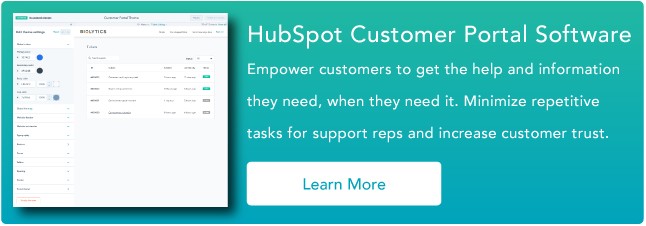Imagine having a bunch of puzzle pieces scattered in different places — that's not very helpful. If you put them together, they tell a more cohesive story.
Customer Data Platforms (CDPs) serve the same purpose — they gather customer data from different sources and store that data in a central place.
Because this data helps businesses better understand their customers and how they behave, CDPs play an important role in helping you make informed product and marketing decisions.
Today, CDPs are vital for brands across industries. But with popularity comes choice. Businesses now have to choose between a wide range of CDP platforms to ensure they're properly synthesizing and analyzing the right data points for their brands.
With all of the above in mind, it's not actually that shocking that the CDP market grew from $1.6 billion in 2021 to $2 billion in 2022.
In this post, we'll discuss the ins and outs of customer data platforms and the best ones to implement into your strategy.
What is a Customer Data Platform?
A CDP consolidates customer data from different tools and software into one centralized database. This database contains customer interaction data and other information from sources such as websites, mobile apps, email, and social media.
CDPs, often confused with Data Management Platforms (DMPs), contain both personally identifiable and anonymous users (for example, IP addresses), while DMPs primarily work with anonymous users.
CDPs consist mostly of first-party data, or data collected directly from the customer. They can also store third-party data, or data you get from another company (or third party).
Types of Customer Data Platforms
Not all CDPs are created equal. There are a few main types:
- Marketing Clouds: Marketing Clouds refers to a suite of cloud-based marketing tools.
- Smart Hubs: Smart Hubs act as a central hub for your company’s marketing technology, or martech.
- Marketing Data Integration: Marketing Data Integration CDPs place data first, with API capabilities.
- Engines and Toolkit: Engines and Toolkit refers to CDPs that are built by the business if the CDPs available are deemed insufficient or to answer specific needs.
Best Customer Data Platform Companies
Segment
Segment is a CDP that helps businesses collect, clean, synthesize, and activate first-party data across different touch points like Facebook, email, and website. Through a single API, Segment can also connect customer data from different business departments, like marketing, sales, service, and web analytics.
Pricing: Free version, $120/month for its Teams, and custom pricing for businesses.
Optimove
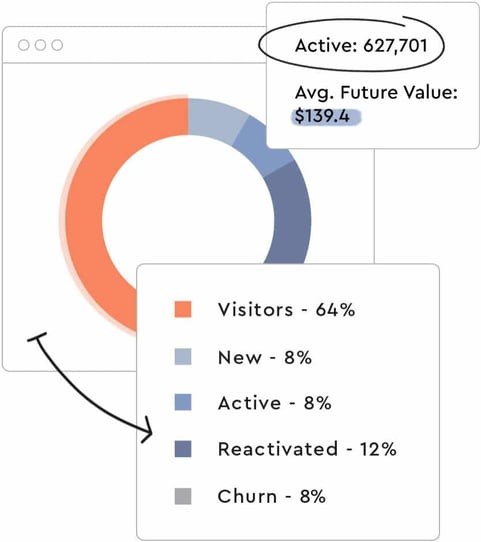
Optimove’s Relationship Marketing Hub brings customer data together in a single customer view. The GDPR- and ISO-compliant platform combines first-party data, third-party data, on-site/in-app user activity, and campaign response history.
Pricing: Pricing is available upon request.
Totango
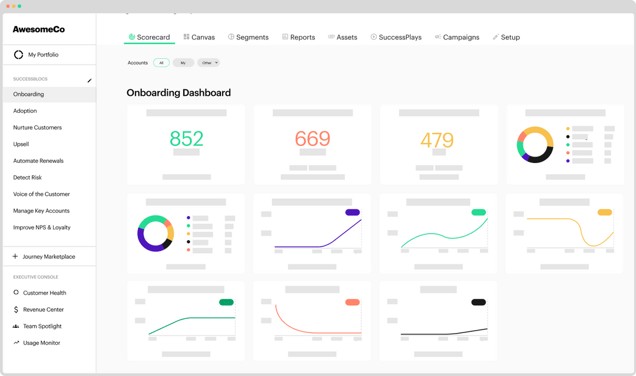
Totango enables users to connect and view data from customer data streams, including contract and transactional data, support tickets, and demographic and behavioral data. You’ll also be able to access and compare real-time customer health data with other metrics like NPS (Net Promoter Score) and CSAT (Customer Satisfaction score).
Pricing: Free intro version. $249/month for Starter and $1,099/month for Growth. Pricing is available upon request for Enterprise.
Bloomreach
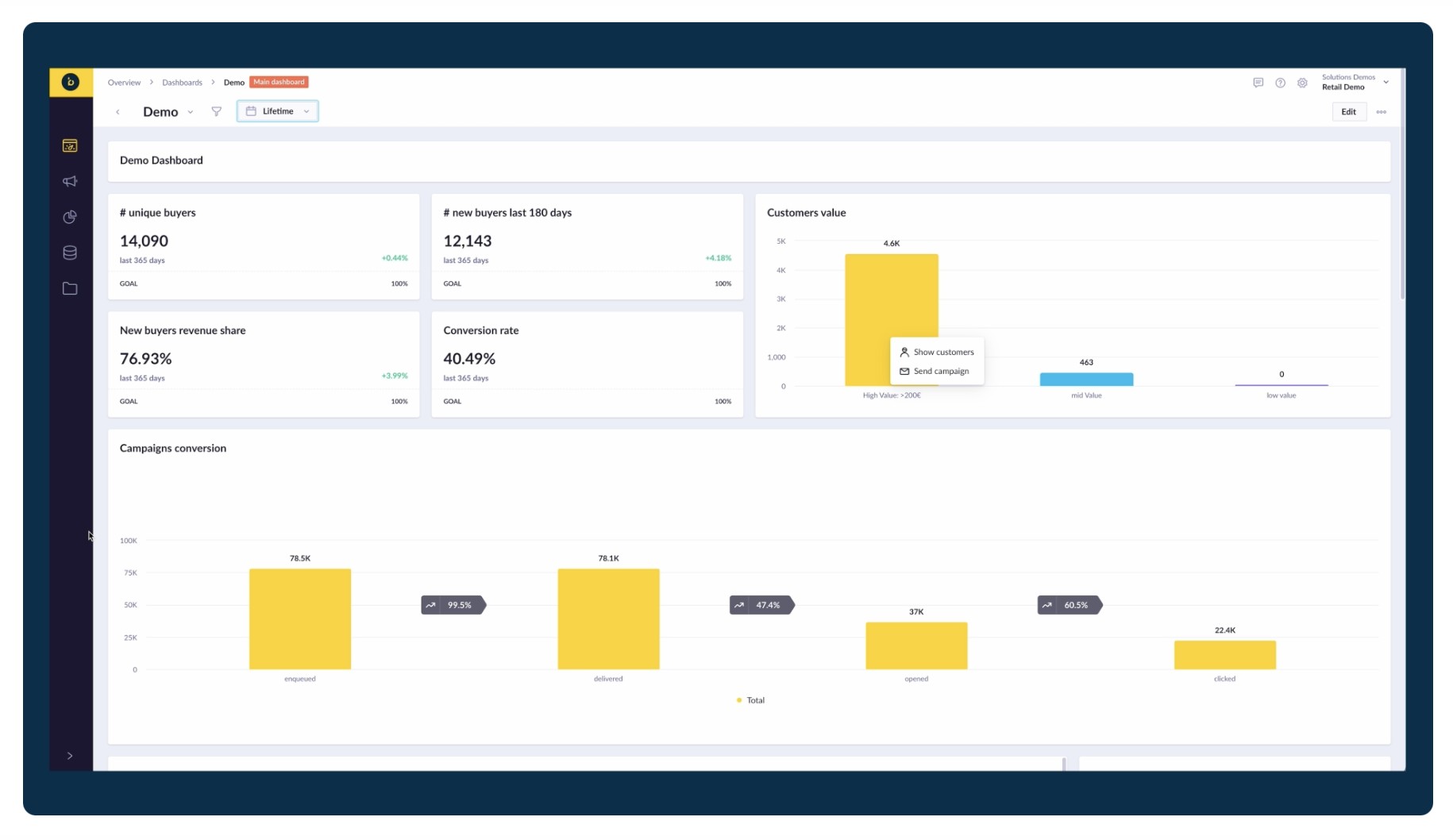
Bloomreach’s CDP, called Bloomreach Engagement, offers a single customer view, online and offline data tracking, and customer analytics like on-site data, backend data, and offline data. The platform also leverages machine learning to make predictive recommendations like ranking customers based on their actions such as likelihood to make a purchase.
Pricing: Pricing is available upon request.
Insider
Insider can connect data across multiple channels such as apps, website, email, and CRM, predict behavior like customer intent using its AI engine, and create personalized experiences at touch points for customers. Customer profile management is centralized with Insider’s journey orchestrator called Architect.
Pricing: Pricing not publicly available.
Tealium AudienceStream CDP
>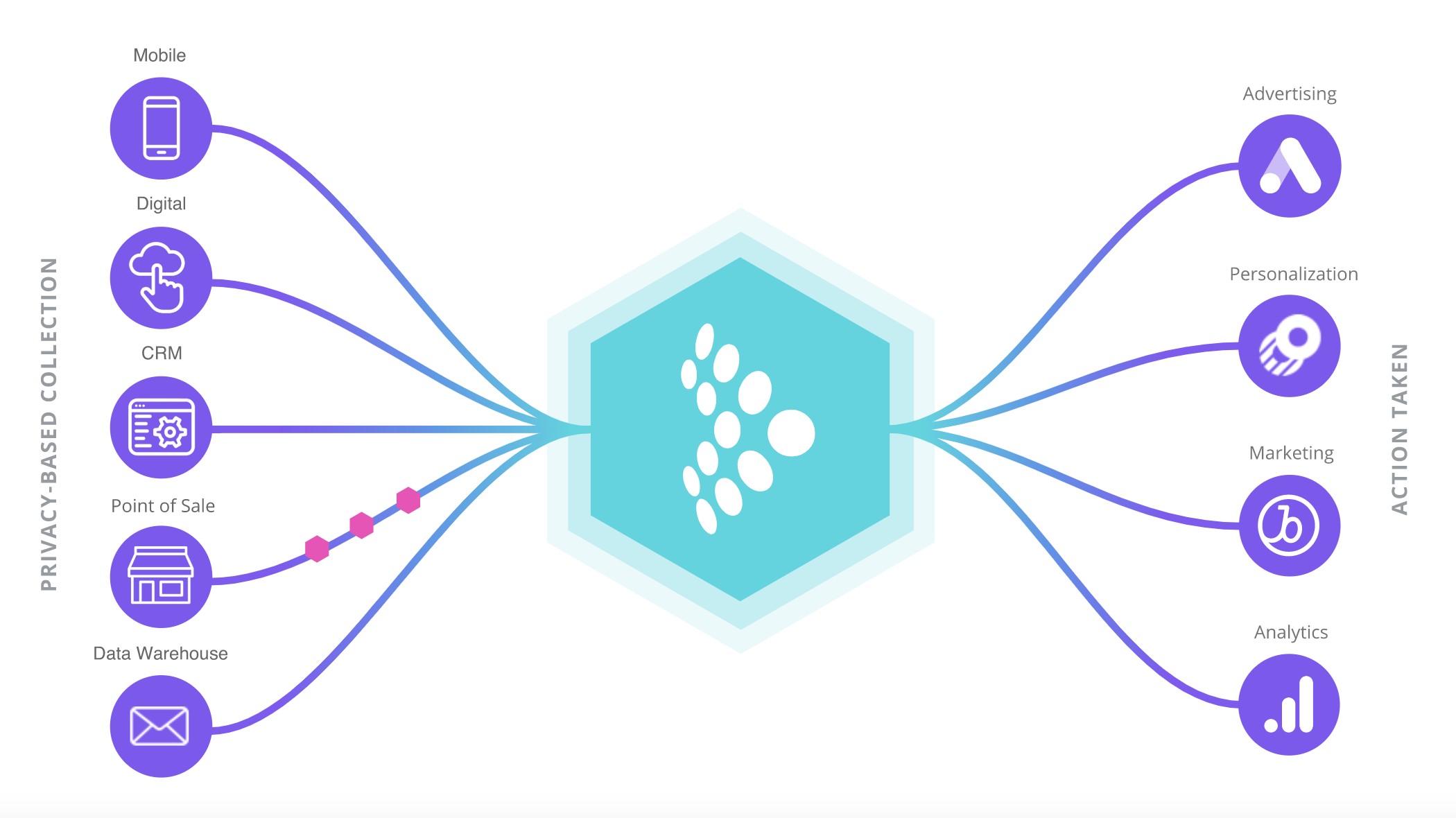
Tealium AudienceStream enables companies to construct detailed customer profiles, with features like:
- Identity resolution: Collecting and matching customer data points across different platforms, devices, and browsers
- Cross-channel audience management: Create a solid data foundation to organize audience data
Pricing: Pricing is available upon request.
Blueshift
Blueshift unifies and organizes first-party customer data in a single customer view. Features include cross-device identity resolution, real-time data, and customizable datasets.
Pricing: Blueshift offers Starter, Growth, and Enterprise packages. Pricing is available upon request.
Microsoft Dynamics 365 Customer Insights
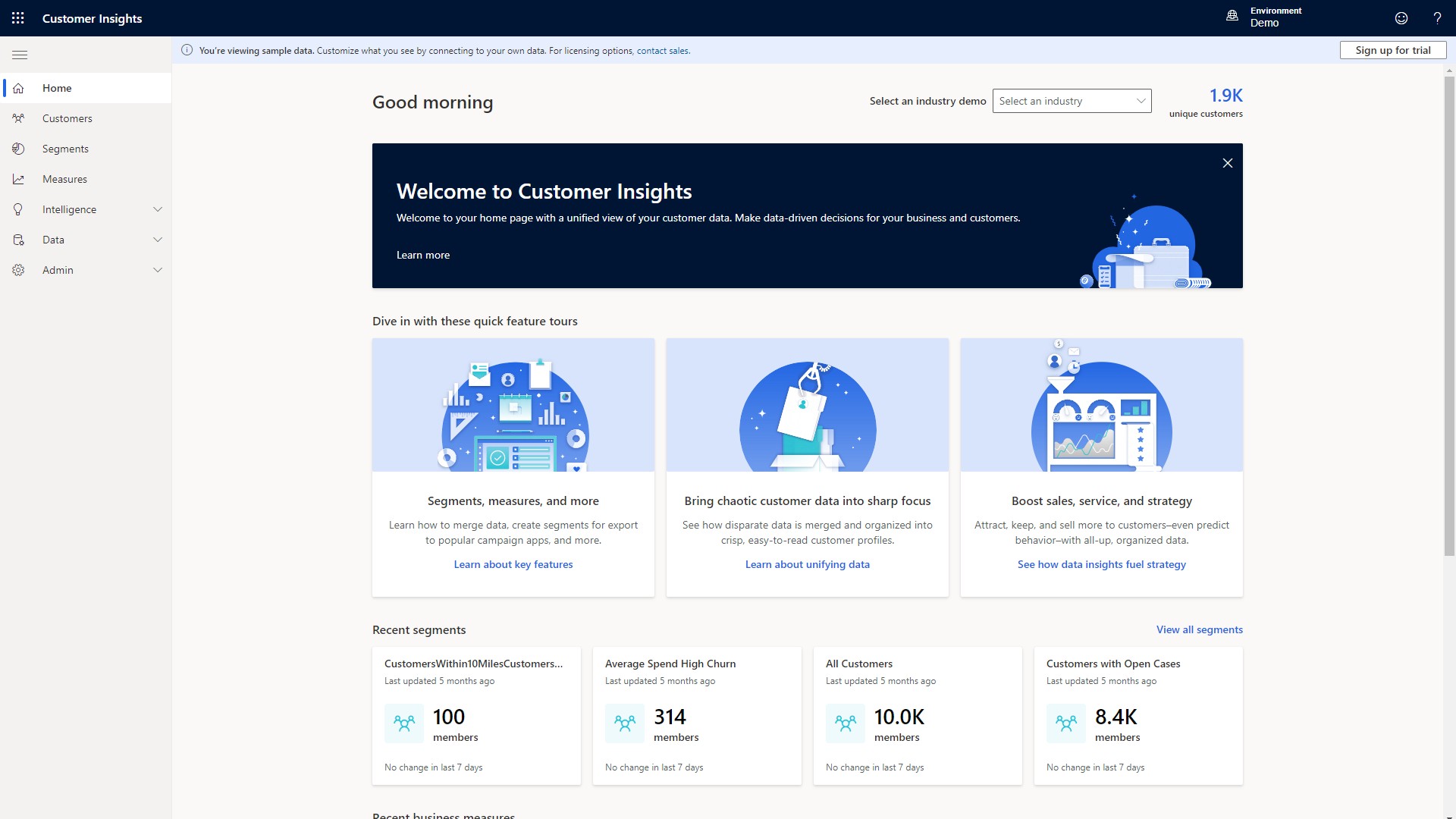
This real-time CDP combines transactional, behavioral, and demographic data to create comprehensive customer profiles. Features like sentiment analysis enable you to identify opportunities to improve customer experience.
Pricing: Microsoft Dynamics 365 Customer Insights offers multiple pricing tiers. More details are available on their site.
Oracle Unity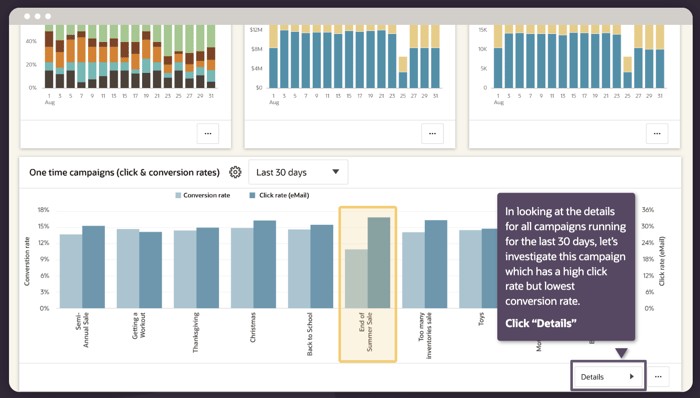
Oracle Unity combines online, offline, first-party, second-party, and third-party data into a single, real-time customer view. Identity resolution enables you to connect individual identities across various channels. Data models built for different industries lets you get granular.
Pricing: Pricing is available upon request.
Emarsys
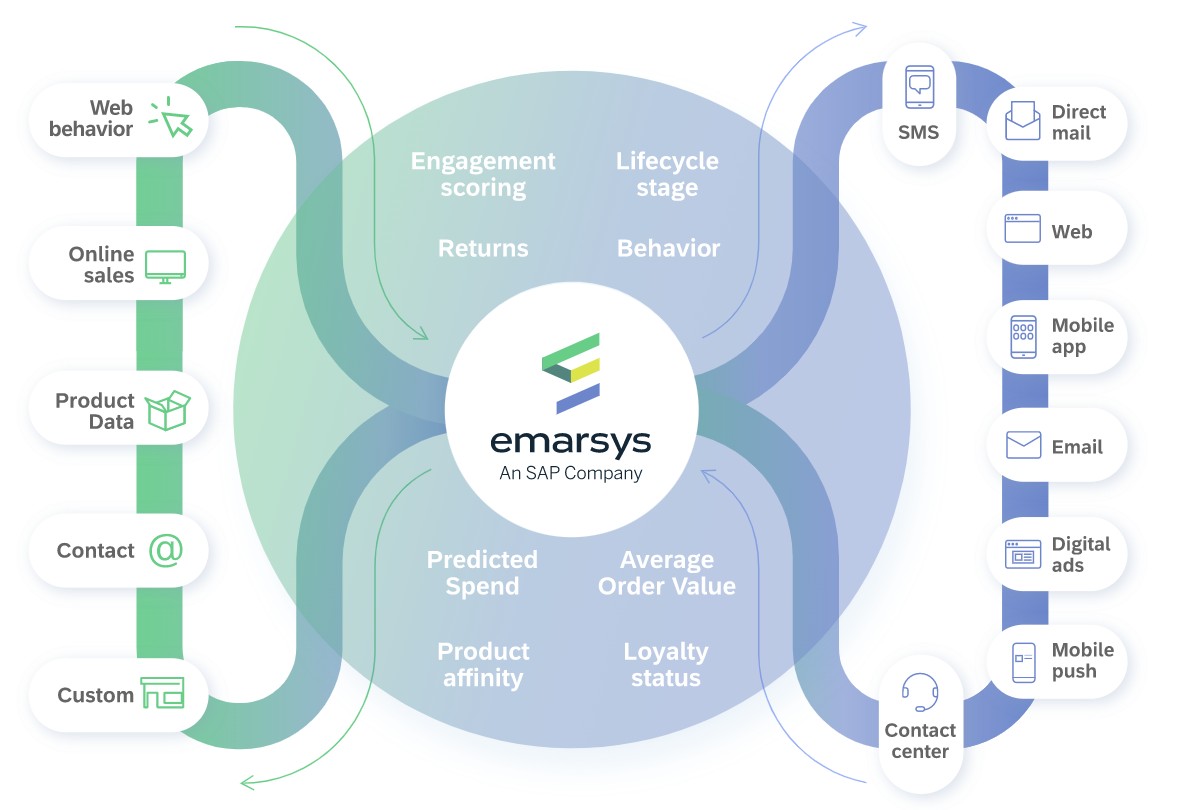
Emarsys connects sales, product, and customer data to provide a holistic view of the customer. The platform helps you synthesize historical and real-time data to provide personalized experiences for your customers.
Pricing: Pricing is available upon request.
How to Choose Customer Data Platform Vendors
There are several things to consider when choosing a CDP. Considering the following can help you determine the best CDP for your business.
1. Figure out your use cases.
In order to find the best CDP for your business, you need to determine your use cases. Naturally, combining customer data and storing it in one place is a top reason for using a CDP, but digging deeper can help you get more out of it. Some uses cases can include:
- Gain a more comprehensive understanding of the customer journey
- Provide a better mobile experience for customers
- Create more targeted advertising campaigns
2. Identify necessary integrations.
The next step is clarifying which tools you’ll need to connect to a CDP.
For example, your company might use marketing tools like Looker, Instagram Ads, and Intercom or customer relationship tools like CRMs, payment processors, email platforms, or help desk systems. You’ll need to determine which of these tools must connect to a CDP, and which integrations are nice to have.
3. Determine your must-have features.
Depending on your needs, there are some CDP features that must absolutely be included. Defining those key features will be critical in helping you pick the right CDP. These features could be:
- Advanced security features like ISO 27001 or SOC 2 certification
- Identity resolution, which helps you identify users across different channels
- GDPR and CCPA compliance
- Real-time data
- Integration options with tools you use or plan to use
For a more in-depth guide on how to choose a CDP, check out this blog post.
CDPs Can Help Your Business
CDPs are a powerful tool in your arsenal. Uniting customer data is the foundation for better understanding your customers and learning how to improve the customer experience.

